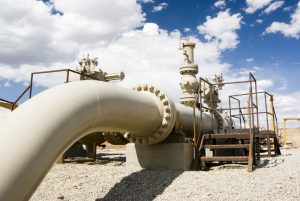Turkmenistan has among the world’s largest gas reserves, but the land-locked country’s main customer is China and exports are limited by existing infrastructure. Ashgabat is perpetually desperate for new customers, swaps, and pipelines, as I noted in a piece for The Diplomat Magazine in January, and a recently announced deal is a big win.
Turkish Energy Minister Alparslan Bayraktar said on X, formerly Twitter, that a deal has been signed between Turkiye’s state-owned pipeline operator BOTAS and Turkmenistan’s Turkmengaz, to bring Turkmen gas to Turkiye.
The deal, which has been in the works for nearly a year, suffered an apparent setback in September 2024 when BOTAS signed an agreement with France’s TotalEnergies to import 1.6 billion cubic meters (bcm) per year of LNG from the United States, starting in 2027. As David O’Byrne wrote for Eurasianet at the time:
Neither Ankara nor Ashgabat have commented on whether Turkey’s new LNG supply contracts will have an impact on long-standing plans for Turkey to import gas from Turkmenistan. However, basic market realities indicate that the more gas Ankara imports from other sources, the less it will need Turkmen gas to meet domestic demand and export commitments.
In March 2024, Turkmen President Serdar Berdymuhamedov signed a preliminary agreement with Turkish President Tayyip Erdogan sketching out a swap deal between Turkmenistan and Turkiye.
“We have a policy of diversifying routes [for exports],” Berdymuhamedov said, adding that gas from Turkmenistan could reach Turkiye and Europe via two routes: across the Caspian Sea to Azerbaijan or through Iran.
Natural gas, unless it is liquified, is transported via pipelines. Turkmenistan and Turkiye do not share a border and no existing pipeline runs directly between them. But there are pipelines that connect Turkmenistan to Iran and pipelines that connect Iran to Turkiye. Under a swap, gas volumes imported from Turkmenistan to Iran would be paired with equivalent volumes exported from Iran to Turkiye.
“We took a historic step in Türkiye-Turkmenistan energy cooperation,” Bayraktar said in a February 11 post. “Today, we have reached the concrete output of the memorandum of understanding on the development of our cooperation in the field of natural gas, which we signed in Antalya in March 2024…
“Within the scope of the agreement, gas flow is planned to start on March 1, 2025. With this agreement, which we have been working on for many years, we will strengthen the natural gas supply security of our country and our region, while furthering the strategic cooperation between the two countries,” he concluded.
Although Bayraktar’s statement did not mention Iran, Turkmenistan’s official state paper, Neytralny Turkmenistan (“Neutral Turkmenisytan”), reported a February 10 phone call between Gurbanguly Berdymuhamedov – former president, father of the current president, and current chairman of the People’s Council (Halk Maslahaty) – and Iranian President Masoud Pezeshkian. Chairman Berdymuhamedov, per the report, announced the BOTAS deal as covering the transit of Turkmen gas through Iran to Turkiye.
Specific details on the volume, price, and other terms have not been reported.
In July 2024, Bayraktar said that Turkmenistan could export as much as 2 bcm annually to Turkiye using existing infrastructure via Azerbaijan and Iran. The following month, Turkiye’s Energy and Natural Resources Ministry said that the two countries aim to have an annual gas trade volume of 15 billion cubic meters (bcm) in the next 20 years – but would “need a pipeline” to reach that volume.

































